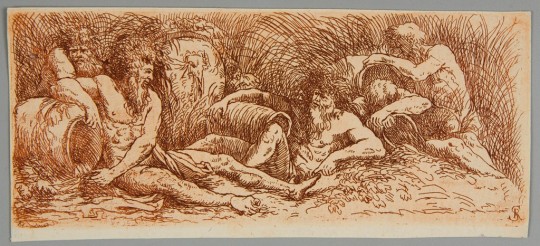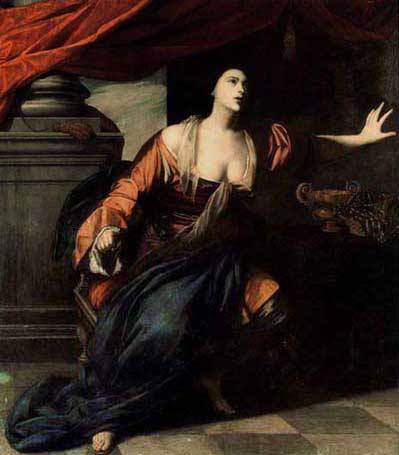Fan account of Jacob Jordaens, a Flemish painter, and tapestry designer known for his history paintings, genre scenes and portraits.
Don't wanna be here? Send us removal request.
Photo

odysseus and Nausicaa, 1655, Salvator Rosa
Medium: oil,canvas
58 notes
·
View notes
Photo

The Immaculate Conception, 1640, Francisco de Zurbaran
Medium: oil,canvas
https://www.wikiart.org/en/francisco-de-zurbaran/the-immaculate-conception-1
52 notes
·
View notes
Photo

Five River Gods, Salvator Rosa, 17th century, Harvard Art Museums: Prints
Harvard Art Museums/Fogg Museum, Gift of Belinda L. Randall from the collection of John Witt Randall
https://www.harvardartmuseums.org/collections/object/249370
21 notes
·
View notes
Photo

The Assumption of the Virgin, 1650, Jacob Jordaens
Medium: oil,canvas
21 notes
·
View notes
Photo

Allegory of the Peace of Westphalia, 1654, Jacob Jordaens
https://www.wikiart.org/en/jacob-jordaens/allegory-of-the-peace-of-westphalia-1654
24 notes
·
View notes
Photo

Study of a Figure in Priest's Robes, Jacob Jordaens, c. 1650, Minneapolis Institute of Art: Prints and Drawings
red and black drawing of torso, legs and arms of a figure wearing robes, with red overlay garment with scroll designs on PL side Jacob Jordaens was the leading painter in Antwerp in the generation after Rubens. He was greatly influenced by the elder artist and occasionally worked for him. Though he is now best known for his droll genre pictures, he also painted religious, historical, mythological, and allegorical works. His prolific draftsmanship is represented by some 450 drawings plausibly attributed to him today. Like Rubens, he worked with a decisive hand, and scholars have had some difficulty assigning some drawing with certainty to one or the other. Jordaens' work is characterized by clear contours and insistent hatching. He often mixed media in his drawings. The use of black and red chalk, oiled charcoal, gray wash, and white heightening seen in the present drapery study is elaborate but not exceptional. The combination of red and black chalk is a hallmark of his workaday drawings. The crisp, luminous effect produced by the brush work in gray and white typifies the close attention that he gave to lighting in preparing his compositions. Though the present study has not been connected with a finshed painting, it clearly represents a priest raising his hand in a gesture of blessing. Size: 14 15/16 x 10 1/16 in. (37.94 x 25.56 cm) (approx.) 20 1/2 x 24 15/16 in. (52.07 x 63.34 cm) (mat) Medium: Black and red chalk, oiled charcoal, grey wash, heightened with white
https://collections.artsmia.org/art/112696/
11 notes
·
View notes
Photo

Satyr and Peasant, 1620, Jacob Jordaens
Medium: oil,canvas
13 notes
·
View notes
Photo

Psyche hosted on Olympus, 1652, Jacob Jordaens
Medium: oil,canvas
23 notes
·
View notes
Photo

Meleager and Atalanta, 1618, Jacob Jordaens
Medium: oil,canvas
10 notes
·
View notes
Photo

The Brenta Canal at Padua, 1741, Canaletto
Medium: oil,canvas
44 notes
·
View notes
Photo

The Holy Family with characters and animals in a boat, 1652, Jacob Jordaens
Medium: oil,canvas
37 notes
·
View notes
Photo

Return of the Holy Family from Egypt, 1616, Jacob Jordaens
Medium: oil,wood
https://www.wikiart.org/en/jacob-jordaens/return-of-the-holy-family-from-egypt
12 notes
·
View notes
Photo

Job, 1620, Jacob Jordaens
Medium: oil,panel
11 notes
·
View notes
Photo

Lucretia, 1642, Artemisia Gentileschi
68 notes
·
View notes
Photo

Two studies of the head of Abraham Grapheus, 1621, Jacob Jordaens
Medium: oil,paper
11 notes
·
View notes
Photo

Self-Portrait, 1616, Jacob Jordaens
Medium: oil,canvas
8 notes
·
View notes
Photo

Minerva, 1640, Artemisia Gentileschi
https://www.wikiart.org/en/artemisia-gentileschi/minerva-1640
154 notes
·
View notes